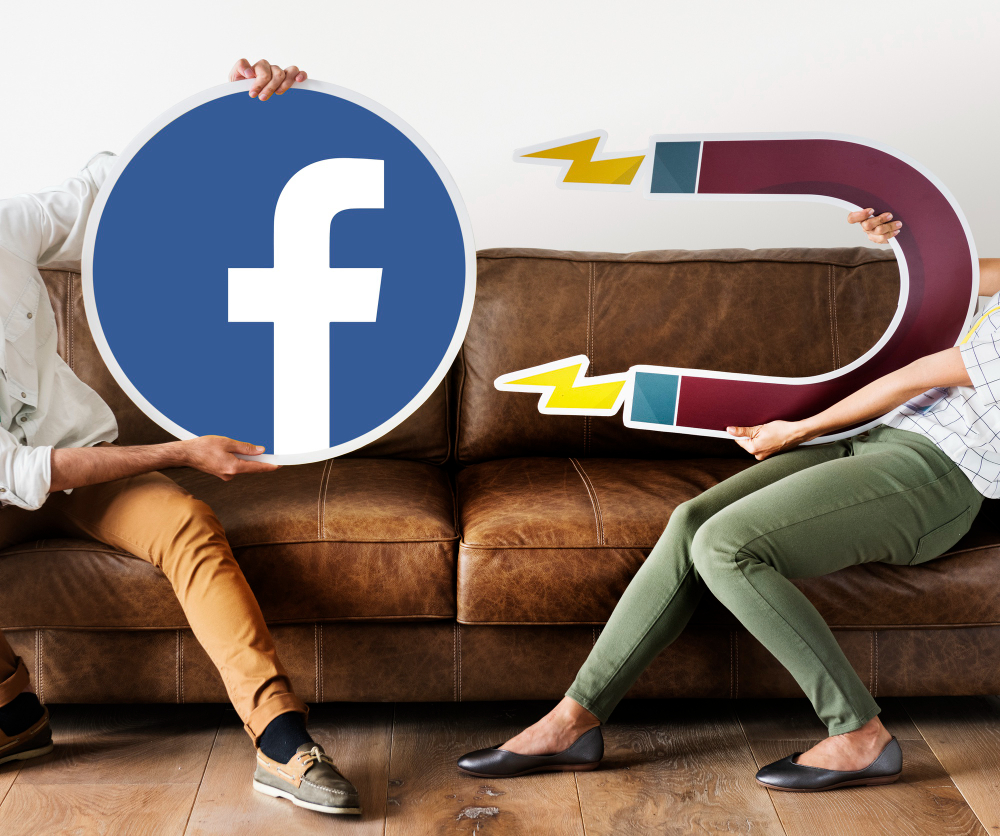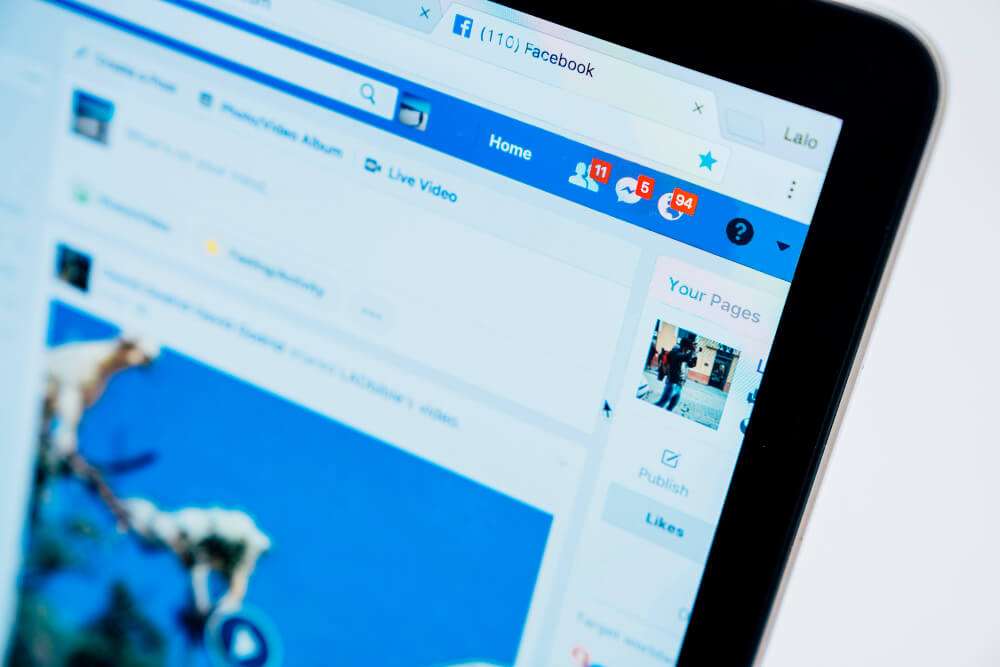Facebook Ads, now known as Meta for Business, offer some of the best potential ad reach opportunities. But like any form of advertising, there is more to it than just setting up your ad and hoping it all works out.
There are methods and strategies to optimize Facebook Ads that can have a massive impact on your campaign results and ROAS (Return on ad spend).
Here at ClickCease we’re lucky to have some of the best and most experienced digital marketers working on our team. So, I spoke to Hagar Rafael, our very own Facebook Ads expert.
With over ten years experience working on Facebook ad campaigns for various companies, Hagar has seen the evolution of the platform and the changes in what does and doesn’t work.
And so, these are our professional tips for Facebook Ad optimization, on all of Meta’s ad platforms.
1. Understand user behavior on each site
Facebook and Instagram might be part of the same family, but the user behavior is totally different. As Hagar points out, “On Facebook people expect to interact with written content and videos. This means news outlets, publisher content, even posts from groups – which is more popular than ever.
“Instagram is mostly inspirational content. People are looking to consume video or stories, and now reels, which is meant to stimulate our creative side as humans”
Attention is the main commodity on Facebook and Instagram. So anything that engages us to act, respond or stay on the site is going to be preferred by Facebook’s algorithm.
“For both organic and paid content, the importance is in the compatibility between the audience and the creative content they are shown”
In short, understand how Facebook users, especially your target audience, will react to content on the site.
Content that works well on Facebook
- Funny or humorous content such as gifs, videos or memes
- Freebies, giveaways and deals
- Social or trending issues
- Short form video
- Live and long form video
Content that works well on Instagram
- Funny or humorous content, including memes or video/reels
- User generated content, such as shares/posts from happy customers (don’t forget to tag them!)
- ‘How to’ or ‘Behind the scenes’ style content – for example life hacks
- Inspiring or experience focused content.
- Questions – such as AMA (ask me anything) style reels or stories

2. Content is King – Video doubly so
Social media has been evolving rapidly over the last few years. First it was Snapchat, now it’s TikTok. But the biggest change both of these social challengers have had is the rapid rise of video content on social media.
“When Facebook bought Instagram this changed how they see the content on their sites. And in fact Instagram became the main focus for Facebook – and here video is King.”
In 2022, this focus changed again, making video, specifically reels, the most important of content – paid or organic.
If you want attention, likes, follows or any form of engagement on Meta’s suite of platforms, then you need to be looking at creating video.
And not just any old video…
3. The art of thumb-stopping is key
The average internet user consumes 147 minutes of social media content every day. That’s nearly 3 hours… This doesn’t take into consideration other forms of digital engagement, such as reading news or other publisher content, engaging with streaming platforms, games, and even our work-based screen time.
Put simply, we all spend A LOT of time on the internet every day, and ad fatigue is a real thing. So getting people’s attention is harder than ever.
“We see the best way to stop people from endless scrolling is by using video. There is something in the movement… the dynamic actions of video that make the human brain stop and engage”, says Hagar.
But it’s not enough just to create video content.
To stop the scroll and keep those eyeballs engaged, you also need a hook and a reason to stay watching.
“The first three seconds of a video are the most important”, says Hagar. But how do you catch people’s attention?
- Bold colors catch attention better
- Use faces – we’re more likely to watch if we can relate to the image
- Use subtitles or captions – millennials and Gen-Z love closed captions
- Open with a bold statement
- Embrace numbers and statistics
You might not use all all of these at the same time (in fact you probably shouldn’t), but understanding what catches our attention is half the battle.
4. Understand how the Audience Network can work for you
The Audience Network is Meta’s version of Google Display Network (GDN). This means you can display banners and interactive ads on apps on the Audience Network.
Although this might sound great, there are a few things to bear in mind:
- The Audience Network targets mobile users only using banner ads or display ads
- Banner sizes are quite small
- This form of advertising can be seen as quite intrusive by users
- Some Audience Network ads are used to incentivize users to win more in-game credits such as lives or coins. Basically, the user is not interested in your product but just in getting free game credit
Hagar makes a good point when she says that, “…The Facebook Audience Network can be very useful when we are doing retargeting campaigns. If we are just trying to get as much exposure for our brand as possible then using all of the available platforms with Meta means we spread our message wide.”
But does this mean that Facebook Audience Network is useful for everyone? Not necessarily.
Some of the industries that see better performance on the Audience Network, according to one study, include:
- Retail and ecommerce
- News sites
- Broadcast services and VOD (video on demand)
- Games
- Dating sites and apps
- Software services
5. Meta Ads work better with a larger audience
One of the recommendations of Meta/Facebook for advertisers is to let their algorithm find the best targeting. What this means for marketers is that it is better to use a broad audience and let the platform optimize your ad reach for you.
And Hagar agrees that an ad strategy on Facebook or Instagram works better when you have an audience over 100,000.
“It’s better to let the campaign run and then optimize based on conversions… But this isn’t suitable for everyone as you do need a high budget.
“Facebook’s targeting does work well, but not so well in small numbers”
But how does this work for those of us who aren’t in highly populated areas?
“I see that for best results, Facebook marketers need to be targeting around 20-30% of the local Facebook using population”, says Hagar.
6. Organic posts are your research ground
You already have a great campaign of organic social media posts on your Facebook and Instagram pages, right? And one great way to bring in traffic is to boost an existing post that has shown good engagement already.
But here is the thing…
Adding a boost to your Facebook ads is not the best way to get your best organic content seen. As Hagar points out, “Boost posts don’t allow you to track conversions and you can only use limited targeting options”.
So how can you make the most of your organic popularity?
Create an ad based on your best organic content, and use the Engagement objective.
Hagar says, “At ClickCease we sometimes use content that has performed well on our organic feed and create a version for our paid campaigns. By using the options to optimize for engagement and conversions at the same time you can maximize the results you get from it”.

7. Use custom audiences and data
Making use of Facebook’s Lookalike Audiences is another very efficient way to reach a relevant and engaged audience on Facebook. Of course, you will need to already own this data, which you probably do.
To build your lookalike audience you can:
- Import email lists in .csv or .txt file format
- Use Facebook pixel to track your website visitors and build you custom list
- Track users who visit or interact with your Instagram profile
- Retarget people who have watched your videos on Facebook
- Access details from app downloads or interactions
- Offline data such as telephone numbers or other details
Facebook themselves recommend a list of between 1,000 to 5,000 people. But anything is better than nothing when you’re getting started, and you can quickly build your lookalike audience with a Facebook ad campaign.
With your base customer audience data, Facebook will then be able to build a profile of your ideal customer over time to better target users.
Hagar says, “I recommend using your own data and then choosing Facebook’s audience targeting attributes, which are very broad, but effective”.
8. Take fraud seriously (and block it)
Fake profiles on Instagram and Facebook are a big problem for the platforms. And even if they regularly clear out these fake profiles, it takes no time for these fake and bot based accounts to come straight back.
What are these fraudulent accounts?
- Bots for fake engagement and likes
- Click farm based accounts
- Accounts showing ‘unusual’ user behavior (for example, trolls or accounts used for spreading disinformation)
So, how prevalent are these fake accounts?
Research shows that even the world’s biggest influencers are not immune, with around 30-40% of followers on big accounts being fake.
And when you consider that some of the profiles have millions of followers, you can see how this adds up.
But what about us, the average marketer?
At ClickCease we see that fraudulent traffic on Facebook and Instagram ad campaigns can hit around 3%. Although this might not sound like much in the overall scheme, when you consider that you’re paying for impressions on hundreds of thousands of accounts, it does have an impact.
In our own tests, we also found that preventing fake traffic on Facebook Ads improves the cost per conversion.
ClickCease offers a free trial for 7 days so you can try it for yourself. If you are running Facebook or Instagram ads, see what a difference blocking fraud can make.
9. Use audience exclusion
As part of your targeting, and fraud prevention, you can create custom exclusion lists on Facebook Ads. Blocking fraud will add some of these profiles to your exclusion list, but you can also set up exclusions for:
- Existing customers
- Certain geo areas
- Other demographic elements such as age or interests
Of course, not everyone will be a potential customer, so creating these audience exclusions can prevent overspend or misspend on your ad campaigns.
And with the broad targeting on Facebook, setting up an audience exclusion list can help your budget go further.
The final word
Optimizing your Facebook ad campaigns and getting the most from your ad spend is an organic process. Regular reviews of your campaign performance, ad costs, and conversion tracking will likely result in changes to your strategy.
Read more about Facebook ad fraud
Using ClickCease to block fake traffic and optimize your Facebook Ads will improve your cost per acquisition and help you avoid targeting invalid audiences.
Sign up for a free 7 day trial and run a traffic audit on your Meta for Business Ads.
